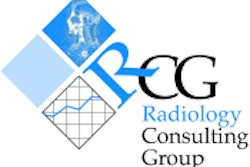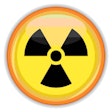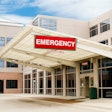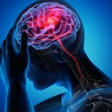When you think about hazards to patients in the imaging suite, the most likely candidates might be radiation overdose, contrast reactions, or magnet-related MRI injuries. But a new study presented at the recent RSNA meeting found that patient falls are actually a fairly common cause of injury to patients in outpatient radiology.
In 2008, patient falls were number five on a list of the top 10 types of "sentinel events," or unexpected occurrences that involve death or serious physical or psychological injury, according to the Joint Commission. And the number of falls has tripled since 2000, with the Joint Commission receiving a little more than 20 reports of patient falls that year, compared with 60 in 2008.
Patient falls may be fairly uncommon in radiology settings, but when they happen the outcomes can be serious, according to researchers at Massachusetts General Hospital (MGH) in Boston. And although patients are often assessed for risk of falls in the hospital, they aren't necessarily assessed in the outpatient clinic.
Dr. Hani Abujudeh and colleagues studied incidents of falls in a radiology outpatient setting and examined the associated factors and fall-related injuries. They presented their research at the RSNA meeting earlier this month.
Abujudeh's team analyzed 82 falls that occurred at MGH between March 2006 and October 2008. During this period, 1.8 million radiological exams were performed, with 77% of those performed on outpatients and 23% on inpatients.
The team collected a range of data from incident reports, including patients' epidemiologic information, factors associated with falls (such as cognitive status, muscle weakness, lower extremity ailments, urinary symptoms, medications used, and history of falls within three months), specific circumstances surrounding each incident, and the outcome of the falls.
The mean age of the patients included in the study was 58 years. Of the 82 falls, 66 (80%) involved outpatients, 11 involved inpatients, and five involved visitors accompanying a patient. Of those 82 falls, 36 (44%) were directly related to a radiological examination, Abujudeh said.
The team also reported the following:
- 74% of falls were witnessed
- 46% of falls happened while patients were sitting or standing
- 85% of patients had at least one predisposing factor for falls
- 20% of patients had experienced a previous fall in the past three months
Four patients were sedated or confused around the time of the examination. In the 82 patients who experienced falls, medications used within 24 hours prior to fall included:
- Agents acting on the central nervous system (40 patients)
- Antihypertensives (42)
- Non-narcotic analgesics (19)
- Anticoagulants (14)
About a third of the falls resulted in a known injury, according to the study.
The team's research can help radiology departments increase their vigilance around safety, particularly with patients presenting for exams with medications still in their systems.
"Falls are among the most widely reported safety incidents [in the healthcare] setting and a significant cause of morbidity," Abujudeh said. "We're always trying to improve patient safety, and so we wanted to gather data that would help us better manage this issue."
By Kate Madden Yee
AuntMinnie.com staff writer
December 21, 2009
Related Reading
Joint Commission streamlines ambulatory standards, August 14, 2008
Quality gap between best and worst performing hospitals grows, October 17, 2006
Preparing for a JCAHO visit, April 18, 2006
Mistakes tied to 2,000+ U.K. deaths last year - report, November 3, 2005
Copyright © 2009 AuntMinnie.com




















